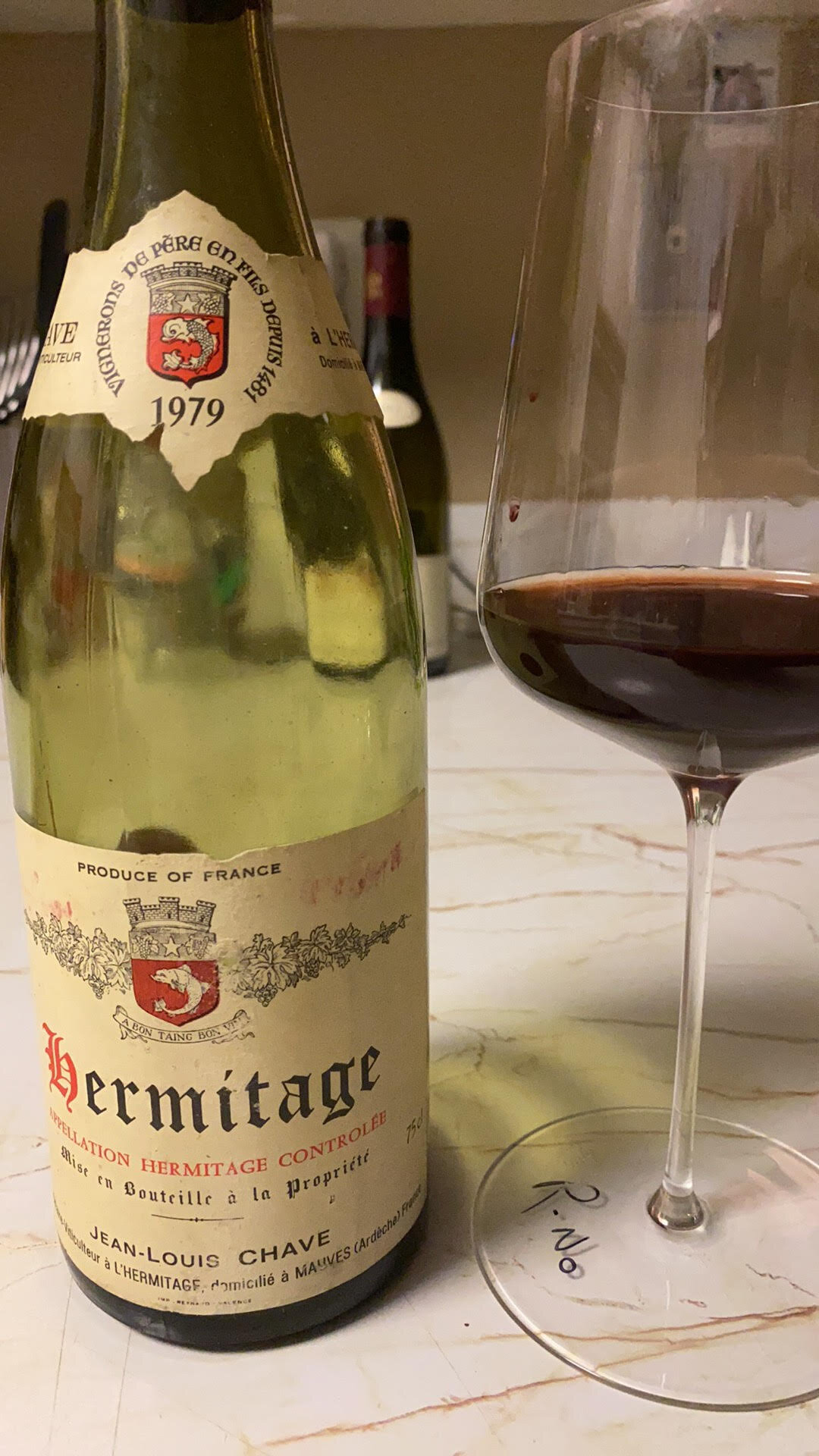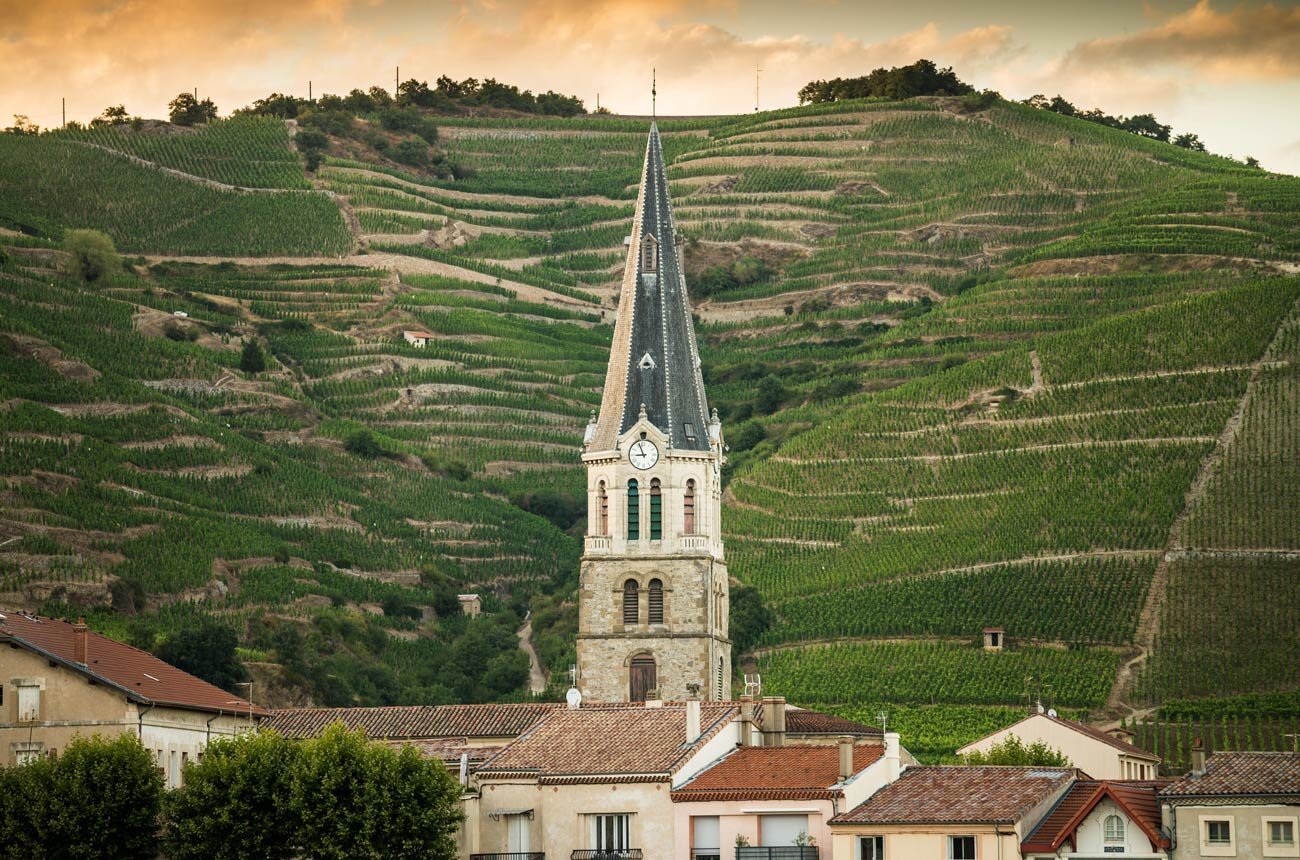The Press
We created The Press to house original content, as well as pertinent, interesting media from our friends and partners, exclusively for Pressoir Club Members.
Categories
Irrigation allowed on Hermitage?
Irrigation on Hermitage?
by Edouard
6/14/23
June 15, 2023
Edouard Bourgeois
Hermitage: there is a bit of a mystical feel around “The Hill”. Hermitage distinguishes itself by many factors, starting with its location, along with Crozes-Hermitage, the only two appellations of the Northern Rhône on the left bank of the Rhône. All the other vineyards are on the other side of the river. Because the river turns a sharp ninety degrees there, the steep hill is perfectly nestled in the river’s elbow with ideal southern exposure providing plenty of sunlight.
It’s a small appellation, with just 137 hectares of vines, mostly planted with red grapes (exclusively Syrah), but there are some 30 hectares of white varieties (Marsanne, with a bit of Roussanne) that give ethereal and singular white wines. Although very discreet on wine lists and even among collectors due to its rarity, the white Hermitage is a wine of wonders. Once the most expensive white wine of France when Thomas Jefferson described it as the best white wine in the world in 1787, this blend of golden Roussanne and Marsanne is like nothing else and can age for decades.
There is a small group, about a dozen landowners, on the hill of Hermitage. Chapoutier owns the most with 34ha, followed by Jaboulet Ainé, with 25ha, including the vineyards of “Hermitage La Chapelle”, a wine on the list of “legends” with the 1961 vintage. The third place goes to one of the longest father-to-son-run wineries in the country, Domaine Chave, with its 25ha. A few others who grow grapes on Hermitage are Delas, Ferraton, Faurie and the Sorrels.
On a recent visit to the Rhône, it was brought to my attention from some of these producers that after the punishing drought in the regions they have experienced for the past few years, the question of irrigation surfaced. Allowing this practice on the Hill of Hermitage, dry-farmed for many centuries, would be groundbreaking news in the world of wine. It also raises another question. If Hermitage allows it, what about Côte-Rôtie, or even further north, dare I say Burgundy?
In Hermitage, the extreme 2020 vintage first raised the question of irrigation. Fortunately, rain eventually came that year. In 2022, a similar weather pattern brought a long period of drought and today, the conversation is no longer just gossip. Locals talk about using water pumped from the nearby Rhône River that would be stored in tanks at the top of the hill of Hermitage. It is also said that the vines would have to be watered manually (as if labor was not difficult enough on Hermitage!) so no drip system would be used.
And one important factor in the decision making of this proposition is that each landowner’s vote would weigh proportionally to the size of their land on the hill.
Although Michel Chapoutier was mentioned in a 2013 Decanter article as pretty confident in the future of winegrowing in the Rhône, I heard that he could accept the decision to irrigate on Hermitage and as the main owner of the appellation, that would make a substantial difference. Producer Guillaume Sorrel from Domaine Marc Sorrel is among those against irrigation. I haven’t heard about the others.
But after all, is irrigation even beneficial when rain fails? Grapevines originate from the Mediterranean basin where summers can make the thermometer rise over 100 degrees Fahrenheit. And these grapes have been producing wine for over two thousand years. So is the plant really suffering that much from the drought? Or is it adapting to the new environment as some of the most established vignerons suggest? In fact, many think that irrigation may be detrimental to making high quality wine since it may promote superficial growth of the root system, since water becomes available on the surface, roots don’t need to dig deep to find it, resulting in wines with less character. Irrigation may also give wines with higher alcohol, making them unbalanced and heady.
What's Pressoir Drinking?
What’s Pressoir Drinking
By Edouard
5/18/2021
Edouard Bourgeois
May 19, 2021
Domaine Jean-Louis Chave Hermitage 1979
1979: While Pink Floyd releases its now iconic album “The Wall”, the Sahara desert experiences an incredibly rare episode of 30 minutes of snow. That same year, some pristine clusters of Syrah are meticulously harvested on the daunting hill of l’Hermitage. Domaine Jean-Louis Chave, founded in the XVth century and run by the same family ever since, without interruption, is often considered to be “the king of the hill”. There is Hermitage and there is Chave Hermitage, a step above. I have been lucky enough to taste older vintages like this 1979 over the course of my sommelier career. With bottle age, this brooding style of Syrah has the ability to keep an intense personality. For me, olives and black pepper are often the descriptors that come to mind, along with bacon fat. But what really amazes me is how “simply delicious” these powerful wines remain. Another feature that always stuns me is the incredible length on the palate.
The Chave family is a strong believer in blending. If not the grape, then the plots. The well-known Hermitage cru “Les Bessards”, often bottled separately by other producers, represents the base of the blend at Chave’s while other crus such as Péléat, le Méal, Rocoules or l’Hermite play a role in fine tuning the overall balance and nature of the vintage. The domaine also produces an authoritative white Hermitage, the result of a blend of century-old vines of Marsanne and Roussanne. Just like its red sibling, this cuvee is capable of very long aging.





